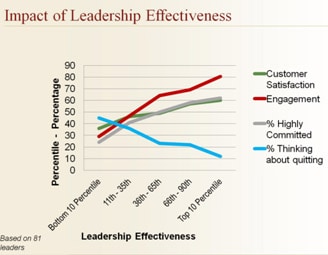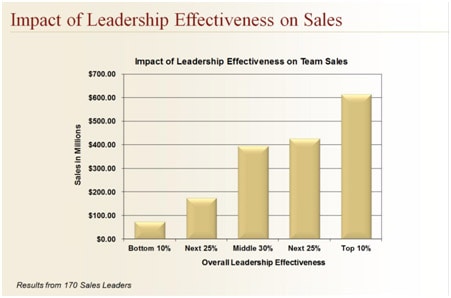
by thepeopleplan | Jun 11, 2013 | culture
Top ten global engagement drivers
You have at least met (if not work with) someone who is NOT engaged– they show up and barely do the job.
What can be a delight for co-workers and managers is someone who is “actively engaged.” Engagement is when an employee expends discretionary extra effort in their job— studies show that about 20% of US workers fit this category but some organizations have more than 40% engaged workers.
What influences an employee to go “Above and beyond?”
I have grouped them into four categories and will discuss suggestions for improving these (see number 1 below) with future articles.
1. How the organization treats people
- Senior management sincerely interested in employee well-being
- Organization’s reputation for social responsibility
- Organization quickly resolves customer concerns
2. What is valued at the organization?
- Set high personal standards
- Organization encourages innovative thinking
3. Employee role/ relationship
- Good relationship with supervisor
- Employees feel they have input into decision-making in their department
4. Development and career opportunities
- Enjoy challenging work assignments that broaden skills
- Improved my skills and capabilities over the last year
- Have excellent career advancement opportunities
(Source : Towers Watson study of the global workforce, Closing the Engagement Gap)
Many managers may be surprised that social responsibility and how customers are treated impacts employee performance. But employees are always considering not just how they are treated, but also how others are treated, and want to take pride in their employer and the organization’s decisions and direction. (For example, I have a colleague who begrudgingly took a job at a local company that is under investigation by the DEC for polluting the neighborhood, and she is not exactly “proud” to promote her new position.)
Three steps you can take NOW to improve employee perceptions of how people are treated:
- Spend 10 minutes once a week going around to exchange “small talk” with employees, finding out more about their lives outside the office and what is important to them (bonus points if you know names of kids, grandkids, and pets as well as favorite hobbies)
- Ask your key team members to suggest one way the organization can improve social or environmental responsibility, and then implement this idea
- Decide one way customers requests can be fulfilled more quickly or conveniently.
Thanks to Terry Williams of the Brain Based Boss for alerting me to this interesting research.

by thepeopleplan | Apr 16, 2013 | culture, job fit, performance
In a study by the Labor Relations Institute of NY, managers selected what they thought employees valued most, and then asked employees what they valued:
Manager /Employee rank- Job Reward
- 1/ 5- Good wages
- 2/ 4- Job security
- 3/ 8- Promotion and growth
- 4/ 9- Good working conditions
- 5/ 6- Interesting work
- 6/ 7- Personal loyalty to workers
- 7/10- Tactful discipline
- 8/ 1- Appreciation for work done
- 9/ 3- Sympathetic help with personal problems
- 10/2- Feeling “in” on things
You can see that the TOP 3 for employees were listed as the BOTTOM 3 in the eyes of managers. Hmm.. I wonder how much time and effort these managers put into these “bottom” rewards if they consider such each a low priority?
As a specialist in compensation, we regularly visit prospective clients who are convinced that their organization needs to pay more to attract, retain and motivate their team members. (And some of them do indeed have issues with pay below the market or internally inequitable.)
However, if your pay is fair for the work you expect and compared to others in your organization, one of the best investments you can make in building a terrific team is with recognition.
Recognition is practically free and creates an immediate impact such as:
- reinforcing company values
- aligning employee efforts to achieve organizational results
- appreciating specific employee efforts (then they continue to do these)
- modeling what ABC- attitudes, behaviors and contributions are valued (others start doing these)
- creating a positive work environment and culture (as more employees demonstrate the desired ABC’s and are recognized for them)
(Manager Survey Source: Foreman Facts, Labor Relations Institute of NY, 2004)
For a Quick recognition template view our 4/23 blog post
Image courtesy of watcharakun at FreeDigitalPhotos.net

by thepeopleplan | Sep 21, 2012 | culture, job fit, performance
Supervisors—you can’t fire yours, but you certainly can leave them…
The topic of the supervisor- employee relationship has been researched and written about since “industrial psychology” started as a field. A recent book title summarize the importance of this dynamic in retaining and engaging employees, “People Leave Managers, Not Organizations.”
How many times did you come home from work and shared your frustration with your manager to friends or family? If this continued, was this a factor in a new job search?
Okay, you say, good supervisors are important, but what is the real impact of a great one? Perhaps you have a few good ones, and few okay ones and only one that is really struggling to connect with her staff and/or achieve important results.
Consider these findings from Zenger Folkman group (see charts below):
- The best leaders had more than twice as many committed and engaged employees
- The worst leaders had more than four times as many employes thinking about quitting
- The best leader’s team had almost twice the customer satisfaction levels
- The best leader’s team in a sales study had almost 10 times (!) the sales compared to the worst leader’s team and about 50% more than the average leader’s team
What makes supervisors “multipliers” or “diminishers”—read Zenger Folkman article that lists the key “fatal flaws” of managers


Image courtesy of Stuart Miles at FreeDigitalPhotos.net

by thepeopleplan | Aug 7, 2012 | action plans, culture, performance
You have rewarded your best supervisor with a promotion to manager.
She is the one person you could rely on to put out the fire, lead the charge on an install, and to get stuff done. Now you granted her the authority to lead the team and changed her role so now she has the time to “be a manager.”
But for some reason, she is not transforming the department as you expected.
You ask yourself, why does she:
- Continue to react to problems instead of implementing process improvement
- Work at the level of tactics and today’s work instead of thinking more strategically
- Struggle with holding team members accountable
- Spend more time than you expect in the field/ warehouse/ or “wandering around”
- Fail to implement those projects that have been on your wish list for months or years
Your star supervisor may have the competencies to be a manager, or may need business systems and coaching to develop these skill sets.
Here is a short list of common competencies that both supervisors and managers should have:
- Decisive Judgment
- Planning and Organizing
- Driving for Results
- Managing Others
- Coaching and Developing Others
Supervisors and managers also approach their work at different levels knowledge, methods, time horizon and involvement with process:
| Area |
Supervisor
|
Manager
|
| Change |
Adapting to Change
|
Championing Change
|
| Methods |
Motivating Others
|
Relationship Management
|
| Knowledge |
Functional or Technical Acumen
|
Business Acumen
|
| Time Frame |
3-12 months
|
1-2 years (general managers 2-5 years)
|
| Systems/ process |
Follow and support systems
|
Create, monitor, improve systems
|
If this situation sounds familiar, take a moment and rate your manager on the level of competence for each of these skills to answer the question “is she a supervisor or a manager?” Her development plan would then be designed to improve in these key areas.
Image courtesy of Master isolated images at FreeDigitalPhotos.net

by thepeopleplan | Aug 4, 2012 | culture, job fit, performance
I remember a Seinfeld episode where Jerry and Kramer pretended to be a traditional couple “How was your day, dear?”
Yes, they mocked this but how important are the People experiences to your day at work?
If you had a “bad day” it is often because of the people experiences you had—you had to assuage a difficult customer, a subordinate made a poor decision or behaved badly, a team member did not complete his part of the project and you had to do more work, your supervisor or co-worker was grumpy or critical, or you had to deal with petty politics.
Your day to day experiences with customers, managers and your team and the climate and culture of the office can be motivational or sapping to your energy.
Our firm’s founder Dr Jerry Newman found that social interaction was a key indicator in job satisfaction and retaining good workers in his book My Secret Life on the McJob. In fact, he found that many teenagers stayed at their fast food job even after college graduation partly based on the great camaraderie they felt at work.
A recent Gallup poll found that if someone had a “best friend at work” they reported more positive perceptions of their job, including much higher ratings of recognition, development, co-worker reliability, job importance, and achievement factors.
McDonald’s is leveraging the importance of what they call “Friends & Family” to attract employees.
According to a recent article by our firm’s founder Dr. Jerry Newman and McDonald’s Executive Vice President and Chief Human Resources Officer Richard Floersch, McDonald’s actually has very high employee perceptions of their people experiences in their job.
Reward/ Percent Who Love This About McDonald’s:
- Culture 82%
- Teamwork 80%
- People I work with 78%
Image courtesy of samuiblue at FreeDigitalPhotos.net

by thepeopleplan | Oct 27, 2011 | culture, job fit
The top person of an organization has a range of possible roles and background, such as a seasoned executive, a third generation business owner, a manager who started at “the bottom” and worked her way up, a new entrepreneur, or the managing partner in a partnership. (Titles might be CEO, President, Owner, Executive Director, Managing Partner, or General Manager)
I am often asked from business owners or top managers “what should I spend my time doing?”
Many have heard how they should work “on the business” not “in the business.”
This means that the top manager does not spend very much time (less than 20% is ideal) on direct or administrative work that should be delegated to staff.
Here is a list of typical functions and essential duties for the Top Manager of an organization.
[If you are not very knowledgeable in these areas or do not have strong competencies in strategic thinking, planning and project management, I urge you to hire these skills sets in your management team and / or find advisors who can provide the expertise and direction your organization will require to survive and thrive.]
Top Manager Duties
1. Set Direction
Provide strategic direction for organization, provide leadership and oversight of management team to implementation of short and long-term goals to achieve strategic objectives.
2. Administration
- Establish and implement departmental policies, goals, objectives, and procedures, conferring with managers, staff, board members
- Appoint department heads or managers and assign or delegate responsibilities to them
- Direct, plan, and implement policies, objectives, and activities of organization to ensure continuing operations, to maximize returns on investments, and increase productivity
3. Evaluate and Re-direct
- Analyze operations to evaluate organization performance and staff in meeting objectives, and to determine areas of potential cost reduction, program improvement, or policy change
- Confer with staff members, managers, consultants, board members to discuss issues, coordinate activities, and resolve problems
- Direct and coordinate an organization’s financial and budget activities to fund operations, maximize investments, and increase efficiency, prepare budgets for approval, including those for funding and implementation of programs
- Monitor industry and market conditions and trends, product innovations, and competitors’ products, prices, and sales
4. Oversee Departments and Functions
- Delivery and distribution of products/ services
- Sales and marketing
- Finance and accounting
- Human resources
- Information technology
Image courtesy of Nongkran_ch at FreeDigitalPhotos.net











